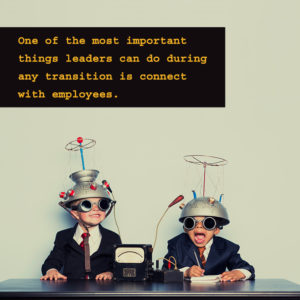
Thank You: Why These Are Two of the Most Powerful Words
 Google “gratitude in business” and you’ll wind up with thousands of results. And not just because it’s November – a month in which the topic is top of mind for Americans preparing to celebrate the Thanksgiving holiday. It’s because, as it turns out, gratitude is good for business. And that is because, as neuroscientists have discovered, gratitude actually changes our brains.
Google “gratitude in business” and you’ll wind up with thousands of results. And not just because it’s November – a month in which the topic is top of mind for Americans preparing to celebrate the Thanksgiving holiday. It’s because, as it turns out, gratitude is good for business. And that is because, as neuroscientists have discovered, gratitude actually changes our brains.
According to a Huffington Post round-up on gratitude and the brain, here are three of 10 ways gratitude affects our performance at work:
-
Gratitude improves social behaviors which makes it easier to network. Studies show that those who are 10% more grateful than average had 17.5% more social capital.
-
Gratitude stimulates goal achievement. In one study, participants instructed to keep a gratitude journal for two months reported more progress toward their goals.
-
Gratitude enhances decision making.
Expressing gratitude in the workplace helps leaders create connections (between actions and outcomes, effort and performance) and build relationships (among team members and with others more far-flung in the organization).
Like working any muscle, with repeated practice, the behavior becomes more natural. Here are three ways to make the most out of the gratitude you offer every day – in person, by phone or via a hand-written note:
-
Be specific about what you’re thankful for, e.g. “Thank you for taking the recent uptick in cost of quality so seriously, and for the focused analysis you provided in your process review.”
-
Explain what you liked or the next steps, e.g. “I learned two things from the perspective you provided and believe we can make significant progress in reducing defects.”
-
Continue to build the relationship, e.g. “I’ll take this work forward to the Quality Council and let you know what next steps we put in place.”
Research shows that those who practice gratitude every day live longer, sleep better, experience increased productivity and live happier lives.
We could all use more gratitude in our lives, and especially in the workplace. My challenge to you… smile more and thank someone today.
Here’s a look at what some of our team members are thankful for:






Connect with me today to learn how to use gratitude in the workplace to level up your team’s performance.


